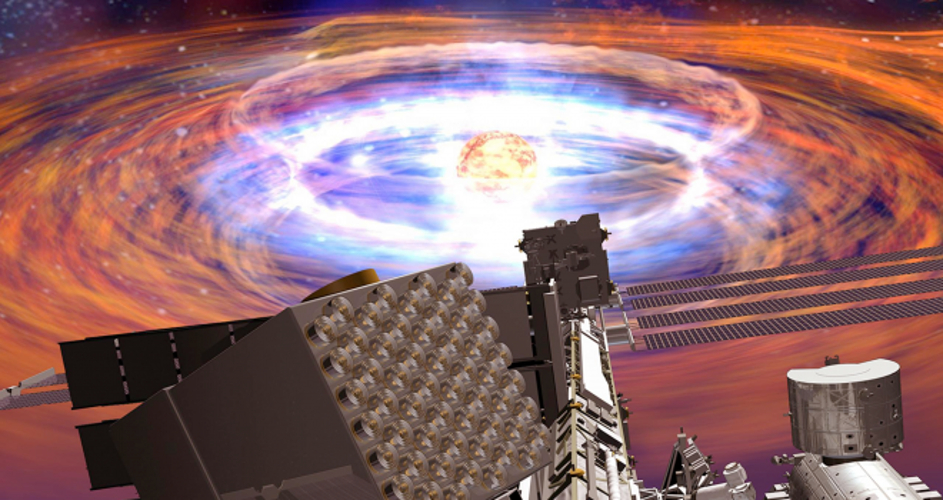
 Credit: NASA
Credit: NASA
Finding Our Way through the Outer Dark
Guiding ships through the outer solar system or beyond is a difficult endeavour. Determining positions and course-corrections from earth becomes increasingly difficult, given the light-travel time to distant spacecraft. For example, it can take more than a day and a half for a command from earth, traveling at the speed of light, to reach the Voyager 1 spacecraft and for earth to get a response. But nature provides "cosmic lighthouses" to help the wandering spacecraft to find its way. These lighthouses are X-ray pulsars - rapidly spinning neutron stars which produce periodic flashes of light as the star rotates. X-ray pulsars are distributed throughout the Milky Way (and other galaxies too). Recently the NICER/SEXTANT instrument (shown in the foreground of the image above), which is currently berthed on the International Space Station, conducted a test to determine the location of the ISS using pulsar navigation. NICER/SEXTANT's main science goal is to make high-precision studies of the periodic X-ray flashes of X-ray pulsars, and use those observations to determine what mysterious stuff lies beneath the pulsar's surface. But, as its alter-ego SEXTANT (Station Explorer for X-ray Timing and Navigation Technology ), the instrument can use the timing of X-ray pulsars to measure observed slight shifts in the pulse period, produced by the motion of ISS as it orbits earth. Over a day and a half in November, NICER/SEXTANT measured the X-ray pulse periods of five X-ray pulsars. By analyzing these data, the position of the ISS could be calculated to better than 5 kilometers. This demonstration shows that, indeed, these "cosmic lighthouses" serve as nature's GPS: the Galactic Positioning System.
Published: January 22, 2018
<
HEA Dictionary ● Archive
● Search HEAPOW
● Other Languages
● HEAPOW on Facebook
● Download all Images
● Education ● HEAD
>

Each week the HEASARC
brings you new, exciting and beautiful images from X-ray and Gamma ray
astronomy. Check back each week and be sure to check out the HEAPOW archive!
Page Author: Dr. Michael F. Corcoran
Last modified Tuesday, 27-Feb-2024 10:13:28 EST


